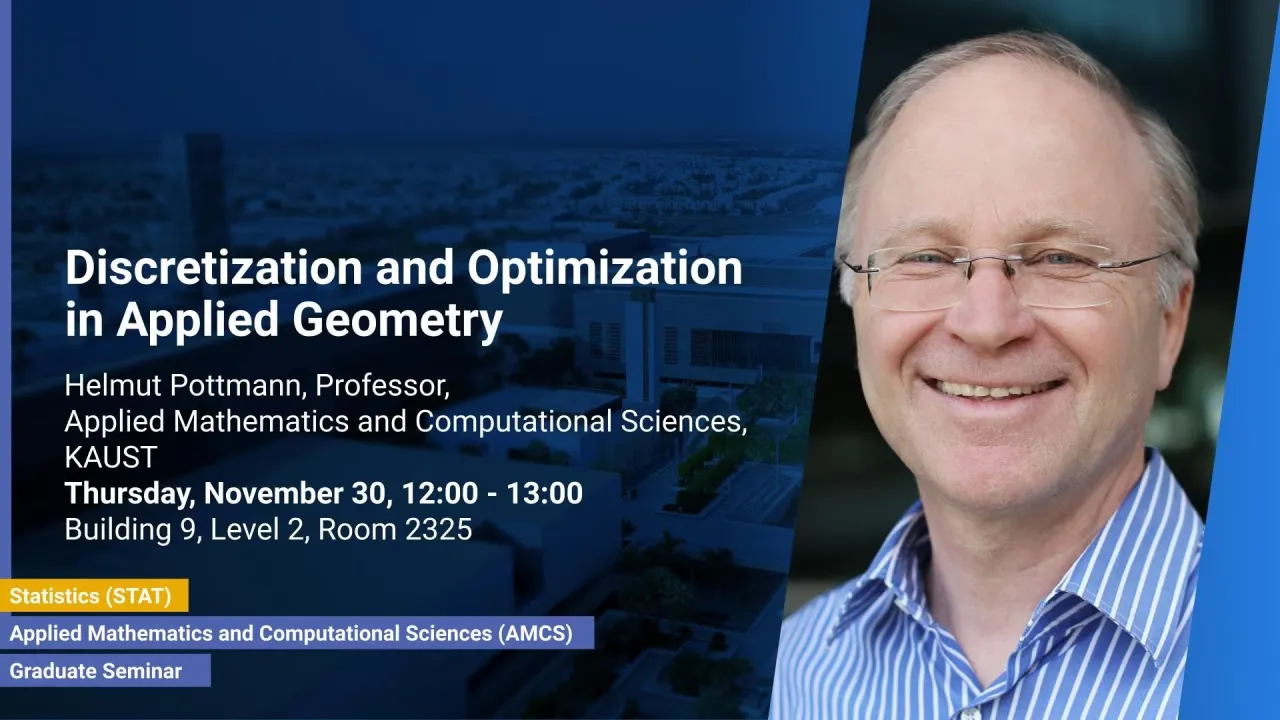
Discretization and Optimization in Applied Geometry
B9 L2 H2
Many problems in applied geometry amount to the solution of a typically nonlinear partial differential equation. We will discuss why it may not be a good idea to discretize the equation, but to take the viewpoint of discrete differential geometry and discretize the theory.
Overview
Abstract
Many problems in applied geometry amount to the solution of a typically nonlinear partial differential equation. We will discuss why it may not be a good idea to discretize the equation, but to take the viewpoint of discrete differential geometry and discretize the theory. A geometric discretization embedded into an optimization framework provides direct access to the geometric structures to be designed and allows one to easily include additional constraints related to intuitive interactive modeling, formfinding and fabrication. We will illustrate this approach at hand of recent work on developable surfaces, gridshells and deployable structures.
Brief Biography
Helmut Pottmann is a Professor of AMCS and CS at KAUST and founding director of the Visual Computing Center (formerly Geometric Modeling and Scientific Visualization Center). He has had faculty positions in the US and in Germany and has been a Professor of Applied Geometry at TU Vienna since 1992. His research interests are in Applied Geometry, Visual Computing and most recently in Geometric Computing for Architecture and Manufacturing. He is a Fellow of SIAM and recipient of the Eurographics Outstanding Technical Contributions Award, the Bezier Award of the Solid Modeling Association and the John Gregory Award for fundamental contributions to geometric modeling.